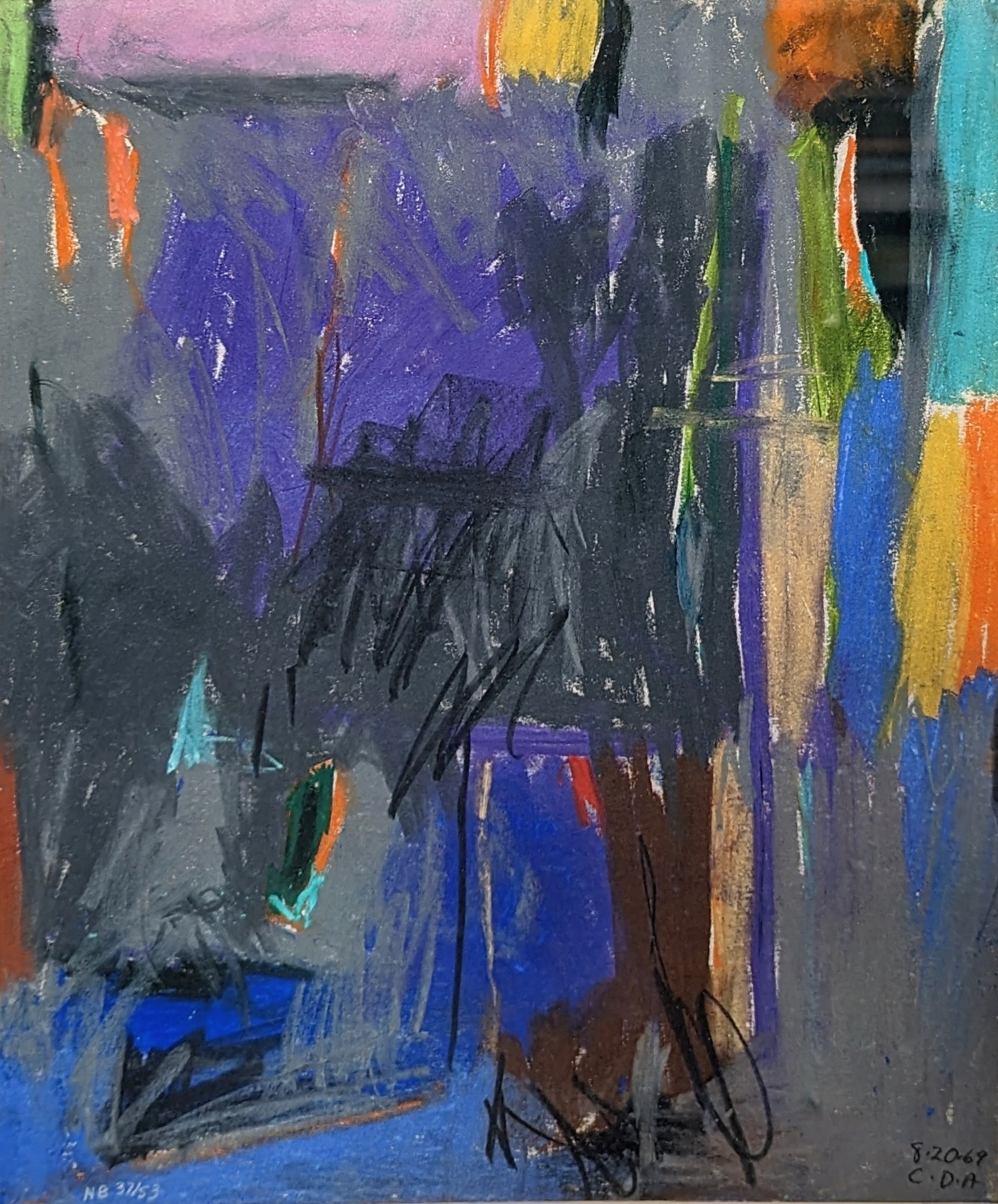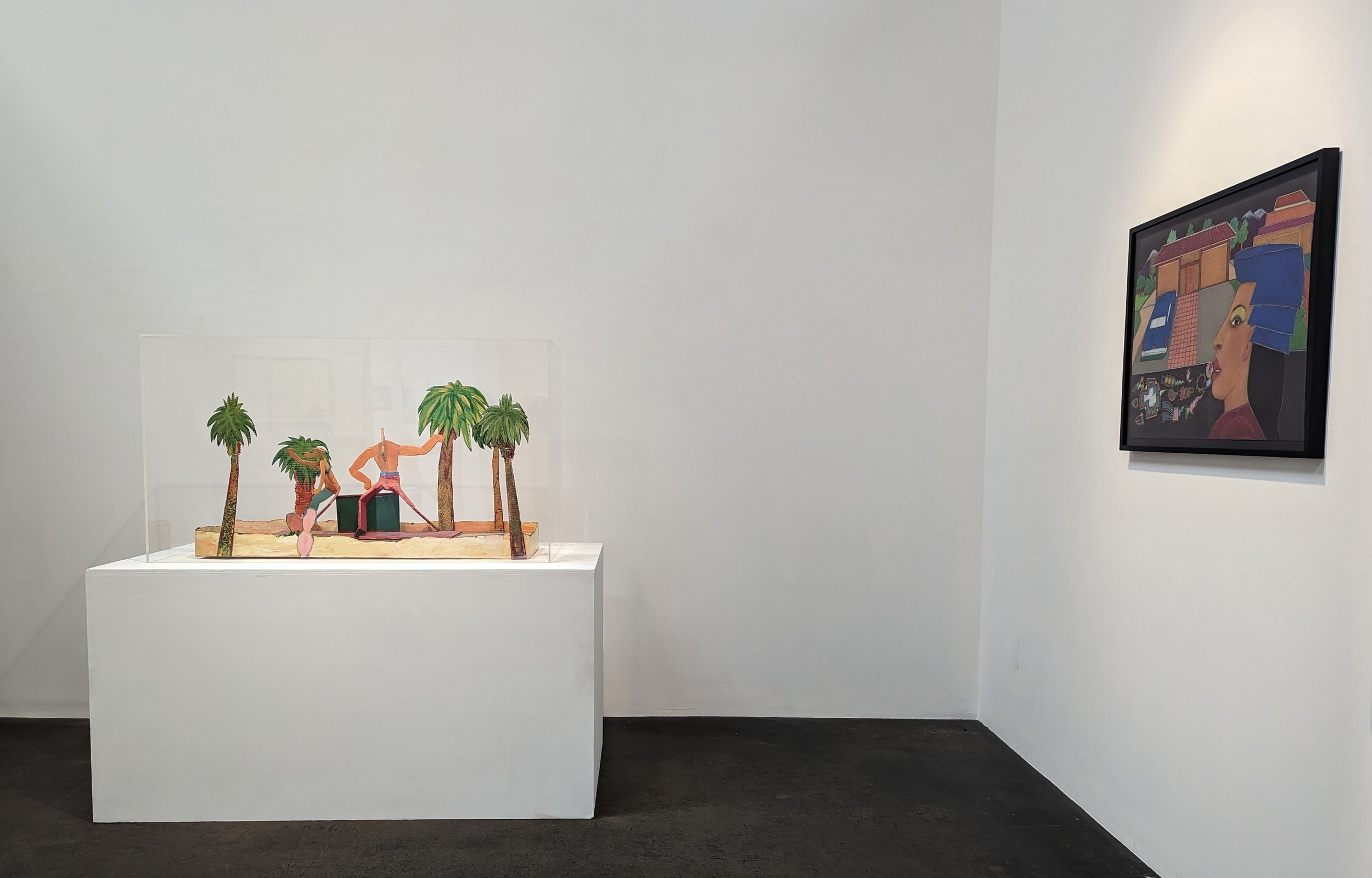Past Exhibition
Dora De Larios: Earthly Divine
Gilbert “Magu” Luján: Magulandia
Carlos Almaraz: ¡Fuego!
December 17- February 4, 2023
Reception: December 17, 3-5pm
PRESS RELEASE:
When Dora De Larios saw the massive stone Aztec calendar in Mexico City at the age of 8, she knew she wanted to create artwork that possessed the power of her ancestry. Raised by Mexican parents in her native Los Angeles, Dora was immersed in the mythology of that culture, employing the anthropomorphic attributes and lore associated with the jaguar, coyote and rabbit in her later work. Her childhood neighborhood near Temple Street was primarily Spanish speaking Japanese families, and her respect for their culture is equally evident in her ceramic forms inspired by the ancient cylindrical Haniwa sculpture. One of the rare women of color in the USC art department in the 1950s, she studied with Otto and Vivika Heino, and was moved by the dynamic life infused in the clay of Peter Voulkos. Her position as a Latina in an art world dominated by white males was boldly embodied in ceramic sculptural work that exalted feminine powers, taking the forms of deities, warriors, mothers, masks and tall totems or trees of life that are topped with the benign head of a female Earth goddess. Over the years, her studio practice also included major corporate and civic commissions, monumental tile projects at Disney parks, and White House dishes for Rosalynn Carter. Her exhibition at Craig Krull Gallery, entitled Earthly Divine, includes ceramic sculpture, wall tiles, functional ware, paintings and prints from all periods of her career.
Like Dora De Larios, Gilbert “Magu” Luján created a menagerie of animated anthropomorphic creatures that populated a world he called, Magulandia. These figures would even morph within the same drawing from a crouching man into a dog, then into a Pre-Columbian pyramid. Luján’s puckish rabbits drove low-rider cars painted with brilliant flames and flowers, as they cruised their way to car rallies. His contemporary Chicano portraits featured people with hats in the shape of pyramids or empanadas, Western boots with faces, and women speaking in pictographic symbols like the glyphs of their Aztec ancestors. In the early 1970s, Luján founded the Chicano Arts collective, Los Four, along with Carlos Almaraz, Beto De La Rocha, Frank Romero, and later, Judithe Hernandez. The group created politically charged murals, brought Chicano art into mainstream recognition, and had a groundbreaking exhibition at UCI and LACMA in 1973-74. Hal Glicksman, who organized that original UCI exhibition, went on to curate, along with Rhea Anastas, Luján’s major retrospective at UCI in 2017. The exhibition at Craig Krull Gallery includes drawings from the artist’s estate, as well as one of his brilliantly painted cardboard and wood stick sculptures of two dogs driving a big red convertible through a desert of giant cacti.
Carlos Almaraz is considered by many to be the legendary father, or now grandfather, of the LA Chicano Arts movement. Active in Los Four in the early 70s, Almaraz also worked directly with César Chávez and his farm workers’ union, as well as Luis Valdez’s El Teatro Campesino. In his artwork, he developed his own vocabulary of symbols and iconography blended from personal histories, Chicano culture and Mexican and Pre-Columbian traditions. His imagery is magical, shamanistic, dreamlike, and theatrical, with vibrantly colored floating figures, volcanoes, fires, and sexual escapades. Almaraz’s lusciously thick paintings of explosive car crashes embody the Frankenstein aspect of machine and man, while his Monet-like Echo Park paintings are a quintessential LA love story. Before all this, Almaraz travelled to New York City in the mid -sixties, partly because that was the center of the art world. He was confronted with Minimalism, which was antithetical to his fiery palette, but he created his own version of grids, with agitated lines and bold colors. While in NY, he filled dozens of sketchbooks and one of them, sketchbook #53, forms the basis of this exhibition, entitled ¡Fuego! These pastel drawings also mark his early explorations into the complex color harmonies that are now synonymous with his visual language. This is the 10th exhibition of Carlos Almaraz’s work organized by Craig Krull, who worked with the artist in the 1980s at Jan Turner Gallery before Carlos died in 1989. In 2017, Howard Fox curated the major retrospective, Playing with Fire: The Paintings of Carlos Almaraz at LACMA.







